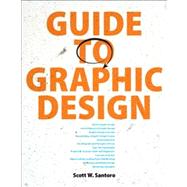ALERT: Before you purchase, check with your instructor or review your course syllabus to ensure that you select the correct ISBN. Several versions of Pearson's MyLab & Mastering products exist for each title, including customized versions for individual schools, and registrations are not transferable. In addition, you may need a CourseID, provided by your instructor, to register for and use Pearson's MyLab & Mastering products.
Packages
Access codes for Pearson's MyLab & Mastering products may not be included when purchasing or renting from companies other than Pearson; check with the seller before completing your purchase.
Used or rental books
If you rent or purchase a used book with an access code, the access code may have been redeemed previously and you may have to purchase a new access code.
Access codes
Access codes that are purchased from sellers other than Pearson carry a higher risk of being either the wrong ISBN or a previously redeemed code. Check with the seller prior to purchase.
--
This access code card gives you access to all of MySearchLab's tools and resources, including a complete eText of your book. You can also buy immediate access to MySearchLab with Pearson eText online with a credit card at www.mysearchlab.com.
Learn to Conceptualize, Create, and Communicate in Graphic Design
An exciting first edition, Guide to Graphic Design helps readers learn the mechanisms used to convey information, integrate ideas into full concepts, but most importantly, to think like a graphic designer. Scott W. Santoro focuses on the principle that design is a layered and evolving profession. The text highlights step-by-step design processes and illustrates how to build good work habits.
Creations from top design firms and design school programs are presented in each chapter engaging readers through the book. Designers have contributed short essays on their work style, their studio habits, and their inspirations. Each designer, showing a passion for design and communication, offers a new perspective and approach to possible working methods.
MyArtsLab is an integral part of the Santoro, program. Key learning applications include, Closer Look tours, 12 Designer Profile videos and Writing About Art.
BRIEF TABLE OF CONTENTS: Preface. Virtual Crit Wall, Dear Reader and Features. Chapter 1 About Graphic Design. Chapter 2 A Brief History of Graphic Design. Chapter 3 Graphic Design Concepts. Chapter 4 Researching a Graphic Design Project
Chapter 5 Generating Ideas. Chapter 6 The Elements and Principles of Form. Chapter 7 Type and Typography
Chapter 8 Proportion Systems: Grids and Alignments. Chapter 9 Concepts in Actions. Chapter 10 Visual Coding: Loading Form with Meaning. Chapter 11 Interactions and Motions Design. Chapter 12 Becoming a Designer.
A better teaching and learning experience
This program will provide a better teaching and learning experience—for you and your students. Here’s how:
- Personalize Learning — MyArtsLab is an online homework, tutorial, and assessment program. It helps students prepare for class and instructor gauge individual and class performance.
- Improve Critical Thinking – Exercises throughout the texthelp readers to make decisions and understanding the connection between an idea and its execution.
- Engage Students – Each chapter presents quick, in-class exercises and longer, more involved projects.
- Support Instructors – Instructor recourses are available in one convenient location. Figures, videos and teacher support materials create a dynamic, engaging course.








